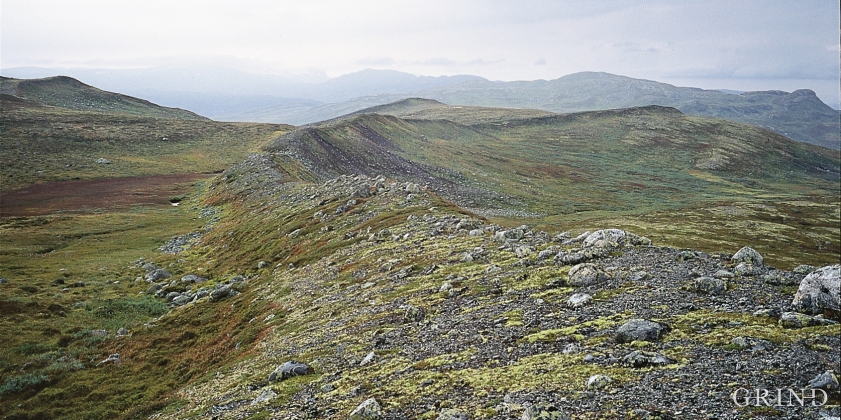Published: 06.09.2015 | Author: Inge Aarseth
" THE CHINESE WALL " AT FRUO
At Fruo, nature has built its own little "Chinese wall ". Some kilometers south of the Vøringsfossen waterfall, there are a number of moraine ridges, the longest and most notable of their kind in Hordaland.
The ridges are side- and end moraines, formed by a glacier at the end of the Ice Age - over 11 000 years ago. It was thought that a period of increased winter precipitation caused this glacier to grow and surge forward in the landscape. The glacier came from the plateau and had glacial tongues reaching down the Sysendalen and Veigdalen valleys. The glacier front reached down to where Lake Eidfjord lies today, and the delta that now makes up Eidfjord terrace was deposited in front of this glacier.
Side- and end moraines are deposited when a glacier surges forward in the terrain or lies still for a long period of time. When the glacier surges forward, the ice works like a bulldozer - it pushes the loose sediments together to form a ridge. If the front of the glacier does not move, there are still small movements within the ice that move the loose sediments forward to the front of the glacier - like a conveyor belt. In both cases, the side that lies in toward the glacier is the steepest. It is easy to see in the ridges at Fruo which side lay in toward the glacier.
- Anundsen, K. 1964. Kvartærgeologiske og geomorfologiske undersøkelser i Simadalen, Eidfjord, Måbødalen og tilstøtende fjellområder. Upublisert hovedoppgave,UiB.
- Anundsen, K., Simonsen, A. 1967. Et preborealt breframstøt på Hardangervidda og i området mellom Bergensbanen og Jotunheimen. UiB Årbok. Mat.nat.serie 7.




